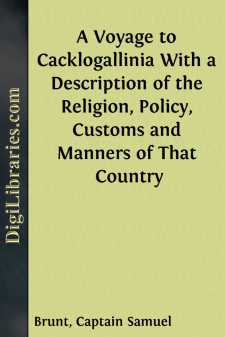Categories
- Antiques & Collectibles 13
- Architecture 36
- Art 48
- Bibles 22
- Biography & Autobiography 813
- Body, Mind & Spirit 142
- Business & Economics 28
- Children's Books 17
- Children's Fiction 14
- Computers 4
- Cooking 94
- Crafts & Hobbies 4
- Drama 346
- Education 46
- Family & Relationships 57
- Fiction 11829
- Games 19
- Gardening 17
- Health & Fitness 34
- History 1377
- House & Home 1
- Humor 147
- Juvenile Fiction 1873
- Juvenile Nonfiction 202
- Language Arts & Disciplines 88
- Law 16
- Literary Collections 686
- Literary Criticism 179
- Mathematics 13
- Medical 41
- Music 40
- Nature 179
- Non-Classifiable 1768
- Performing Arts 7
- Periodicals 1453
- Philosophy 64
- Photography 2
- Poetry 896
- Political Science 203
- Psychology 42
- Reference 154
- Religion 513
- Science 126
- Self-Help 84
- Social Science 81
- Sports & Recreation 34
- Study Aids 3
- Technology & Engineering 59
- Transportation 23
- Travel 463
- True Crime 29
Our website is made possible by displaying online advertisements to our visitors.
Please consider supporting us by disabling your ad blocker.
A Voyage to Cacklogallinia With a Description of the Religion, Policy, Customs and Manners of That Country
Categories:
Description:
Excerpt
INTRODUCTION
A Voyage to Cacklogallinia appeared in London, in 1727, from the pen of a pseudonymous "Captain Samuel Brunt." Posterity has continued to preserve the anonymity of the author, perhaps more jealously than he would have wished. Whatever his real parentage, he must for the present be referred only to the literary family of which his progenitor "Captain Lemuel Gulliver" is the most distinguished member. Like so many other works of that period, A Voyage to Cacklogallinia has sometimes been attributed to Swift; its similarities to the fourth book of Gulliver's Travels are unmistakable. Again, the work has sometimes been attributed to Defoe. There is, however, no good reason to believe that either Defoe or Swift was concerned in its authorship, except in so far as both gave impetus to lesser writers in this form of composition.
Fortunately the authorship of the work is of little importance. It lives, not because of anything remarkable in the style or anything original in its author's point of view, but because of its satiric reflection of the background of its age. It is republished both because of its historical value and because of its peculiarly contemporary appeal today. Its satire needs no learned paraphernalia of footnotes; it can be readily understood and appreciated by readers in an age dominated on the one hand by economics and on the other, by science. Its satire—not too subtle—is as pertinent in our own period as it was two hundred years ago. Its irony is concerned with stock exchanges and feverish speculation. It is a tale of incredible inflation and abrupt and devastating depression. Its "voyage to the moon" has not lost its appeal to men and women who can still remember a period when human flights seemed incredible and who have lived to see "flying chariots" spanning oceans and continents and ascending into the stratosphere.
The first and most obvious interest of the tale is in its reflection of economic conditions in the early eighteenth century. The period following the Revolution of 1688 saw tremendous changes in attitudes toward credit and speculation. A new and powerful economic instrument was put into the hands of men who had not yet discovered its dangers. With the natural confusion which ensued between "credit" and "wealth," with a new emphasis upon the possible values inherent in "expectations of wealth" rather than immediate control over money, an unheard-of speculative emphasis appeared in business. The rapid increase in new trades and new industrial systems afforded possibilities of immediate rise to affluence. The outside public engaged in speculation to a degree not before known. Exaggerated gains, violent fluctuations in prices, meteoric rises and collapses—these gave rein to a gambling spirit perennial in man. The word "Projects" enters into literature as a recurrent motif, strangely familiar to our present generation, which needs only to turn Defoe's Essay on Projects into contemporary language to see the similarities between the year 1697 and the year 1939....


